ADVERTISEMENT
Haiti
Etang Saumatre also known as Lac Azuei (Lake Azuei)
Haiti's version of the Dead Sea is the briny Etang Saumâtre, which translates in English to brackish pond. As Haiti's largest lake, it holds second place to the Dominican Republic's Lake Enriquillo as the second largest lake in Hispaniola. Known by some as Lake Azuéi, it is known by Haiti's neighbors as Lago del Fondo, and also by the Taíno name, Yainagua.
Found in what is described as the arid part of the Cul-de-Sac valley, the pond can be found less than 30 km east of the Haitian capital in the Ouest Department. At its northern side, it forms part of the border with the Dominican Republic.
River Macassia
Considered to be one of the best sites for outdoor adventures or fishing throughout the regions of Western Europe and the Americas, Haiti's River Macassia can be found by water enthusiasts at the coordinates of 18.933333 and -71.866667. For those not so well versed in degrees of latitude and longitude, the rivers inclusion on many adventure maps allows for them to use a simple printout as their guide to many water adventures.
Another river of great note in Haiti is the Artibonite River. It starts in the Dominican Republic, in the mountains of Cordillera Central, the same range where many rivers on the island of Hispaniola get their start. It then flows down into Haiti. On its course through the smaller portion of Hispaniola, it flows, having most of its journey coursed through Haiti, before it then empties itself into the Gulf of Gonâve.
River Capolitte
The River Capolitte is one on a list of many rivers in the country. Considered a tributary of another on the list, the River Capolitte flows through Haiti's North-East department and also has a path through some of Haiti's neighbor country, the Dominican Republic. At its source it flows out of the principle mountains of the island of Hispaniola, the Central Cordillera, the source of many other rivers that flow through Haiti and the Dominican Republic. The source of the River Capolitte is found on the Haitian side of the mountain.
From there, it flows along the Haitian border with the Dominican Republic before it joins the River Nantes People, also from the same source. They then both flow into the greater River Massacre.
River Massacre
Río Massacre, or, as it's known in English, the Massacre River, flows along the border separating the two countries that share the island of Hispaniola. Also known by the name the Dajabon River, this 55 km river gets its source from Cordillera Central in the Pic de Gallo with an altitude of 1205 meters. It crosses through Haiti and the Dominican Republic, through the Department of the East, with its main tributaries being, on the left bank, the River Capolitte and the River Gens de Nantes.
The waterway forms the northern route of the border between the two countries after leaving its source. It then runs through Haiti along the border into the North-East Department, before emptying into the Caribbean Sea to the west of Pepillo Salcedo, a city in the Dominican Republic.
Massif de la Hotte
Millions of years ago, the Massif de la Hotte was separated from the rest of the country now known as Haiti by a sea channel that was wide and deep. The remoteness this separation caused gave way to a wellspring of naturally occurring species of plants, birds and reptiles. Today, all that separates the mountain range in the south west of Haiti from the rest of Haiti is its height of 7700 ft.
Found to the far west of the Tiburon Peninsula, the Massif de la Hotte is still home to many of Haiti's most diverse species, endemic to the area and often endangered. The threat comes from the steady decline in Haiti's forests. As it stands, this mountain range has some of the last cloud forests found in Haiti at its peak, deforestation through floods, mudslides and human effort having taken the once abundant geographical feature by force.
Morne des Commissaires in Thiotte, Massif de la Selle
Many rural area towns across Haiti suffer from the same problem of limited water supply. For the Massif de la Selle town of Thiotte, perched at an elevation of between 1,200 and 1,800 meters above the sea, their water problem could have been described as nightmarish, a situation that can so easily lead to the spread of diseases such as the current Haitian epidemic of cholera. Some help has been given to the town of Thiotte, found to the south of Forêt des Pins, where once the residents would have to travel far distances by foot just to get water.
Petit-Goave as a Tourist destination
Petit-Goâve, one of the first cities to be established in Haiti, was inhabited by the Amerindians, who named it Goâve. It became Aguava when the Spanish colonists settled it. Eventually the French acquired and divided it, re-naming it Grand-Goâve and Petit Goâve. Petit Goâve, served as the temporary capital of Saint-Domingue, a wealthy colony.
Petit-Goâve was seriously damaged in the aftermath of the 2010 earthquake when a strong 5.9 aftershock struck at the epicenter of which Petit-Goâve lay close to. A week later the U.S. Marines arrived in Petit- and Grand-Goâve to bring aid supplies.
Worcester Parish to help Immaculate Conception Parish in Les Anglais
The prosperous Christ the King Parish (CKP) of Worcester has voted to subsidize Immaculate Conception Parish (ICP) in the poorer town of Les Anglais. Before the parish council met to vote on the matter, the church made an outreach to their parishioners with a letter informing them of the proposal being discussed. The majority of parishioners were decidedly enthusiastic about the twinning of the two parishes.
Les Anglais, a fertile farming community, is subject to hurricane activity, which repeatedly damages its infrastructure, and has been in need of support for some time. With a monthly donation of $600.00, ICP School will receive tuition, teachers' pay, textbooks, and a hot meal.
Bulgaria, Armenia, Haiti lead world in suffering
Listed on the 2012 count of those countries leading the world in 'suffering' is the western hemisphere's poorest, Haiti. It is a position resulting from years of government instability and fighting and was exacerbated by the devastating effects of the earthquake that tumbled hopes and dreams along with lives and infrastructure in January of 2010.
Still, as the list goes, it is headed by countries on the other side of the world, Bulgaria and Armenia respectively. The statistics are that Bulgarians, a large percentage of 39, rated their lives to be so bleak they could be labeled as 'suffering. This percentage outstripped the second most economically distressed country, Armenia, which has 37% of its population acknowledging their poor condition of life.
Grande Colline Mountain in Haiti
As part of a new series highlighting those areas of Haiti that most people have never seen, Terra Incognita took a step into the mountain range of Grande Colline as the pilot for their program, focusing on the area for the information to be gathered on one of Haiti's last remaining forests.
Located in the south west of the country, in the Tiburon Peninsula, Grande Colline isn't easily accessed by the average voyager. The team consisting of a filmmaker, a journalist, photographers and biologists accomplished their search of the Chaîne de la Grande Colline, which shares the Massif de la Hotte with Chaîne de Macaya by using a helicopter. The area sparked interest because, at above 2000 meters, it still boasts areas with original cloud forest. But, while its neighbor to the east, the Chaîne de Macaya has been studied extensively, Grand Colline remains vastly undiscovered because it's inaccessible by roads.
Our objective is to share with you news and information about Haiti and the people of Haiti. Traditions, habits and the way we were or grew are alive in this site. We highly recommend that you Subscribe to our Newsletter and also share with us some of the things that are memorable and made us unique people.

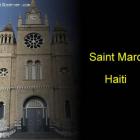 Saint Marc, Haiti
Saint Marc, Haiti 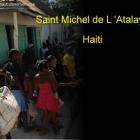 Saint Michel de L 'Atalaye
Saint Michel de L 'Atalaye 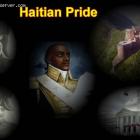 Haitians are a Proud People
Haitians are a Proud People 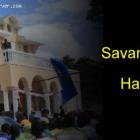 The Town of Savanette, Haiti
The Town of Savanette, Haiti 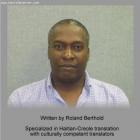 Haitian Creole Translation
Haitian Creole Translation